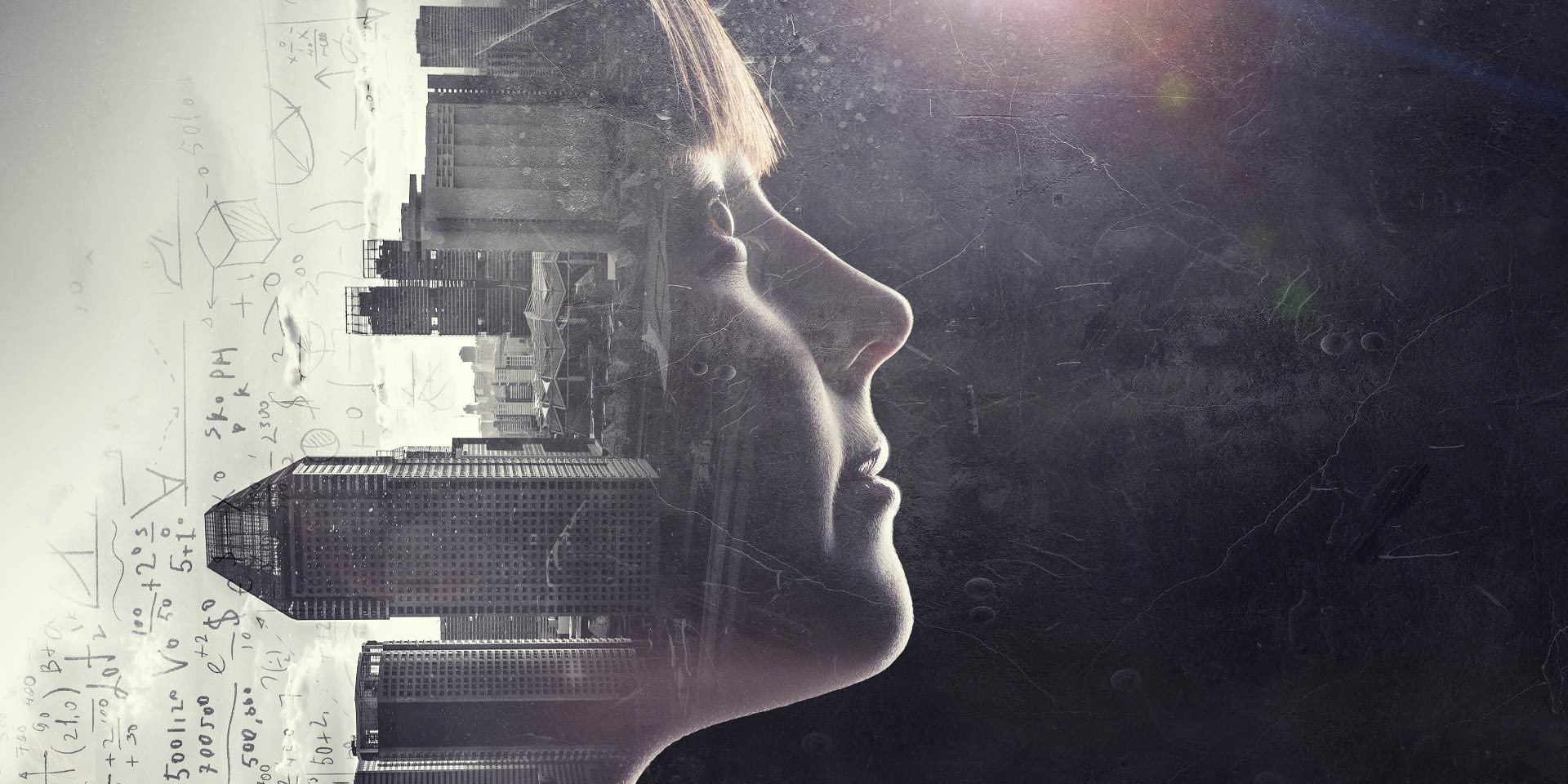“Millions of ordinary, psychologically normal people will face an abrupt collision with the future. Citizens of the world’s richest and most technologically advanced nations, many of them will find it increasingly painful to keep up with the incessant demand for change that characterises our time.” (Alvin Toffler, Future Shock, 1970)
Alvin Toffler “wrote Future Shock on a manual typewriter,” wrote Sir Ken Robinson,[1] an international advisor on education. In other words, his unsettling predictions were made back when there were not even personal computers or the Internet. However, what we are experiencing today has been accurately predicted and the cause has been identified as not so much change itself, but its very fast pace and incredible magnitude. Sir Robinson illustrates his idea by comparing it to the cultural shock of refugees or migrants, who wake up overnight in another country, with an unknown language, other customs, values, and rules, an indecipherable lifestyle, or an inaccessible view of the world.
If the twentieth century has been called the “age of speed,” we can say that the twenty-first century is the age of acceleration. Sir Ken Robinson emphasises that, beyond the psychological problem of our (mal)adaptation to a civilisation that is rapidly changing its values, we should seek in education the resources to alleviate this future shock.
The accelerated transformations of our civilisation are not entirely positive or negative, but have both positive and negative effects, depending on the socio-cultural context: the information exchanges are faster, more complex and spread wider over our planet; the accelerated technological progress; the dramatic reduction of the world’s natural resources; the demographic changes; migration; pollution; the activity and political and economic influence of multinational corporations on states, and so on.
The chance for creativity
Under these conditions, the development of human creativity is a major opportunity and resource for many aspects of life, such as ecologisation; waste recycling; beneficial use of technology; streamlining media communication and access to information and education; lifestyle improvement; the development of human resources, even the salvation of democracy; migrant integration strategies; innovation in education; accessibility of healthcare, and more. It is no coincidence that studies on creativity have exceeded the field of psychology, becoming a subject of interest for the education sciences or other broader fields, such as psychosociology, cognitive sciences, neural networks, heuristics, management, economics, business, and more.
Somewhat wishfully, contemporary society is called a “knowledge-based society”.[2] This is because we can mainly find it in the western world, in various academic communities and in innovation, invention, or design centres. However, a knowledge-based society is an environment in which creativity can best be developed. By various methods, strategies and techniques, this type of framework seeks to take over the surroundings, tame nature, help restore the natural or social environment, rationalise resources, professionalise individuals, and so on.
For the contemporary individual to start a revolution of creativity, to quit being merely a routine Homo faber, and to become a true Homo ingeniosus, he needs to invest in his abilities. Sir Ken Robinson lists these abilities as follows: creativity, communication, collaboration, and critical thinking. Thus, the revolution begins with the educational institutions, which must treat the development of creativity and professionalisation as strategic fields, and open themselves to collaborative initiatives with cultural institutions, philanthropic organisations, various enterprises, and even business companies.[3]
Within the Fortune 500 list, there are some companies that invest strategically in the field of creativity and, in some countries, government commissions or ministries have been set up to manage the field of creativity.[4]

How to stimulate creativity
The ability to adapt is specific to the creative person. It manifests itself by reconfiguring the thought process of a situation, in order to find new and better solutions to the problems that arise from that situation.[5] Anthony Weston sees in creativity “the capacity to invent three or ten new ideas, to get ‘stuck’ problems unstuck… Critical thinking can show us the need for new ideas, and can filter or elaborate them,” but without creativity, “it only walks on one leg”.[6]
The author proposes a creativity test that was used on 200 candidates for a real job application, to select the best of them. Here is the test:
“It is a dark and stormy night. You are driving along in your sporty little two-seater. You come to a bus stop. Three people are waiting for the bus. One is a stranger, who at that very moment keels over with a heart attack. Next is an old friend who once saved your life. The last, believe it or not, is the man or woman of your dreams. Who do you pick up? At first glance, there is no good answer. Or maybe too many… So, what do you think? How creative are you? Think about it for a moment before reading on. What would you do?”[7]
Weston refutes the tendency of some individuals to tell themselves that they are not creative, as if this trait were innate and unchanging, like the colour of the eyes. It is in our power to become more creative! His book, Creativity for Critical Thinkers—the product of a university course designed for his students, who helped improve it with their great ideas inspired by Weston—is written to support anyone for this very purpose.
Promising to help us become more creative by following its advice, the book offers numerous tests, methods and thought-provoking subjects. “I don’t promise that you will turn into a Picasso or an Einstein,” says the author humorously, “but almost all of us can do far better than we do now, partly because so few of us are trained in creative thinking at all… Even a few methods can go a very long way.”[8]
One method we can take from Weston’s approach is to address a problem of wide interest, either of the community in which we live, society as a whole, the political organisation of the country, or current civilisation, and no longer consider it beyond our power to influence or resolve it. In other words, let us no longer take any aspect at the macro social level as an obvious or immutable given, or a self-implied one, but let us imagine, whether playfully or relaxed, in a reverie,[9] other approaches or solutions.
Weston adds, “As no less an expert than Sherlock Holmes once said, what’s obvious isn’t always true. There are other possibilities. What is really practical is to start looking for them… Think of our usual dislike of problems as a kind of push. We have a difficulty that makes us uncomfortable and therefore motivates us, however reluctantly and without much confidence, to try to remove the discomfort.”[10]
Exercises
Here are some topics to think about, until the next article, for anyone willing to enter the “game”:
- “Have all possible political systems already been invented? Really? Can you imagine something truly new? How about at least a few major improvements to our system as it currently exists?”
- “Have all possible forms of art been invented? It’s not likely: just think of the emergence recently of digital art, computer music, whale song, highly developed graffiti styles, ‘re-art’ (art using wholly recycled materials), etc. What else is possible? Invent a few new forms of art yourself. (Weather art? Something involving roads? Smells?)”
- “How do you think we might solve the environmental crisis? You know the usual answer: by trying to cut way back on pollution and waste, hard as that may be, and hoping to muddle through. What else could you imagine?”
- “What if time travel were possible? What totally new possibilities might arise? An empirical resolution to the evolution-versus-creation debate? Wars between alternative futures, fought in the present, as in the Terminator films? Vacations with the dinosaurs?”[11]
To these thought-provoking questions I would add four:
- How could the traditional voting system look different in our super-technological age and with the current possibilities of instant remote communication, through teleconferences, discussion forums, online petitions, and so on?
- Given the same technological resources, how could a representative democracy become a participatory democracy, more efficient and more faithful to the will of the masses?
- Also, having at hand the same technical advantages, what improvements and what cost reductions could be brought to the traditional higher education system, structured by university buildings, university campuses and dormitories, university libraries, and physical participation in courses, seminars and exams?
- How could the life of Christian churches and its relevant interaction with young people, people who are no longer accustomed to going to church, or sceptics be reimagined?
And now, here is the winning answer to the job application test: “Legend has it that the winning job candidate (out of 200) hesitated not at all before giving his answer: ‘I would give the car keys to my old friend and ask her to take the stranger to the hospital, and then I would stay behind and wait for the bus with the woman of my dreams.'”[12]
Corina Matei is a PhD lecturer at the Faculty of Communication Sciences and International Relations of the “Titu Maiorescu” University, Bucharest.



















